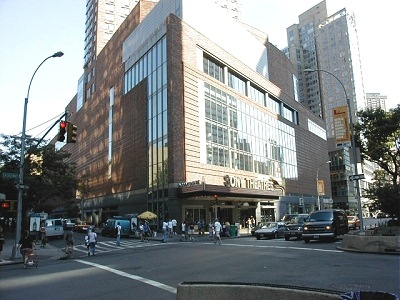
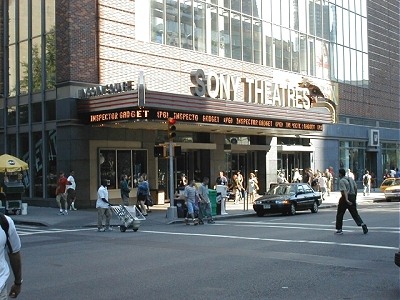
At the heart of it all II:
Measuring presence
Matthew Lombard and
Theresa B. Ditton
Pictures from Questionnaire Administration
In this study we're developing a standardized paper-and-pencil measurement instrument for presence that can be utilized for presence research across diverse media, stimuli, and subject populations. We're administering a comprehensive set of questionnaire items in a low presence and a high presence condition. For the latter, we were fortunate to receive permission to administer the questionnaire to audiences at the IMAX 3D theater at Sony Theaters Lincoln Square in New York City in late July and early August of 1999. 'We' includes Matthew Lombard; Professor Theresa Ditton and her husband Paul; doctoral students Daliza Crane and Karl Horvath; master's student Bill Davis; and BTMM alum Tim Hicks and his wife Megan.
Here are some pictures of the experience.
The theater is located at 68th Street and Broadway in New York.


All our respondents watched the feature "T-Rex: Back to the Crustaceous"; outside the building a large sign advertised the film.
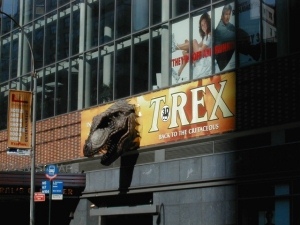
We selected the IMAX 3D format because it maximizes many of the audiovisual characteristics thought to evoke a strong sense of presence in consumers: "Imax 3-D is the closest thing to true, immersive virtual reality on the planet right now," [Brett] Leonard [the film's director] enthuses. "You've got two strips of 15-perf, 70-mm film slamming in the projectors. It fills your peripheral vision and is three-dimensional, so you're watching the action and it's happening to you at the same time" (http://www.wired.com/news/news/story/12433.html). "T-Rex" has drawn large audiences to IMAX theaters around the world.

We recruited people as they arrived at the IMAX theater on the fourth floor of the building. Doctoral student Daliza Crane is shown here with our sign that describes the prizes participants will be eligible to win (a 27 inch television, a computer [PDA], or $150 cash, and a Movie Night Out for Two package of gift certificates).
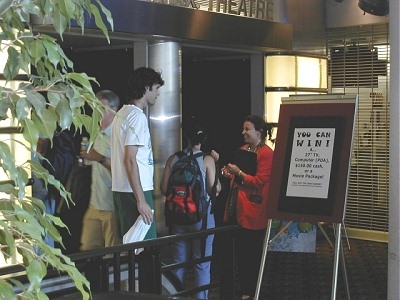
The theater itself is huge, with an 8-story high screen.
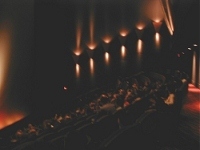
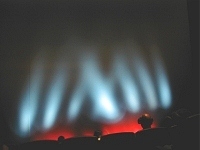
The theater management was very helpful; each showing has a live host, who explains how to use the special 3D headset, and the host added a recruitment message to her/his presentation.
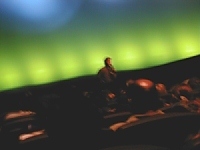
While the audience watched the film we moved the sign to the 'survey area' at the theater exit.
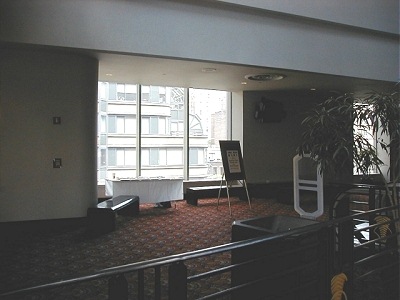
After some showings we only had a small group complete the questionnaire.
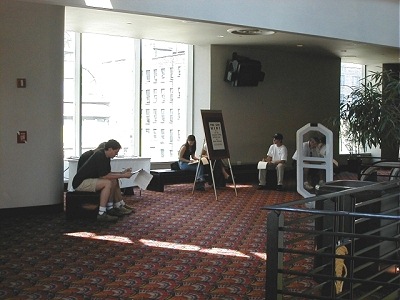
But other times we had a large crowd.
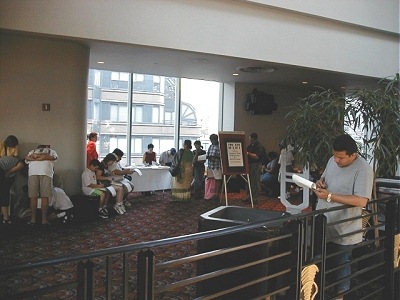
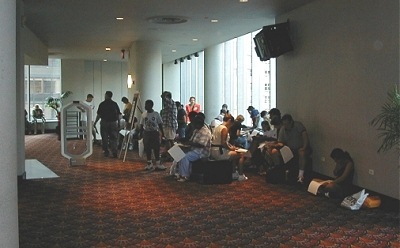
We collected over 300 questionnaires, and we're proceeding to gather data for the low presence condition.